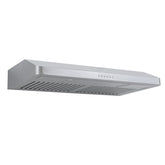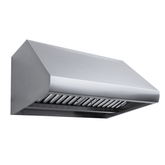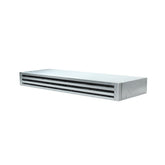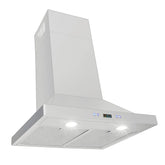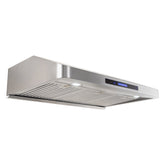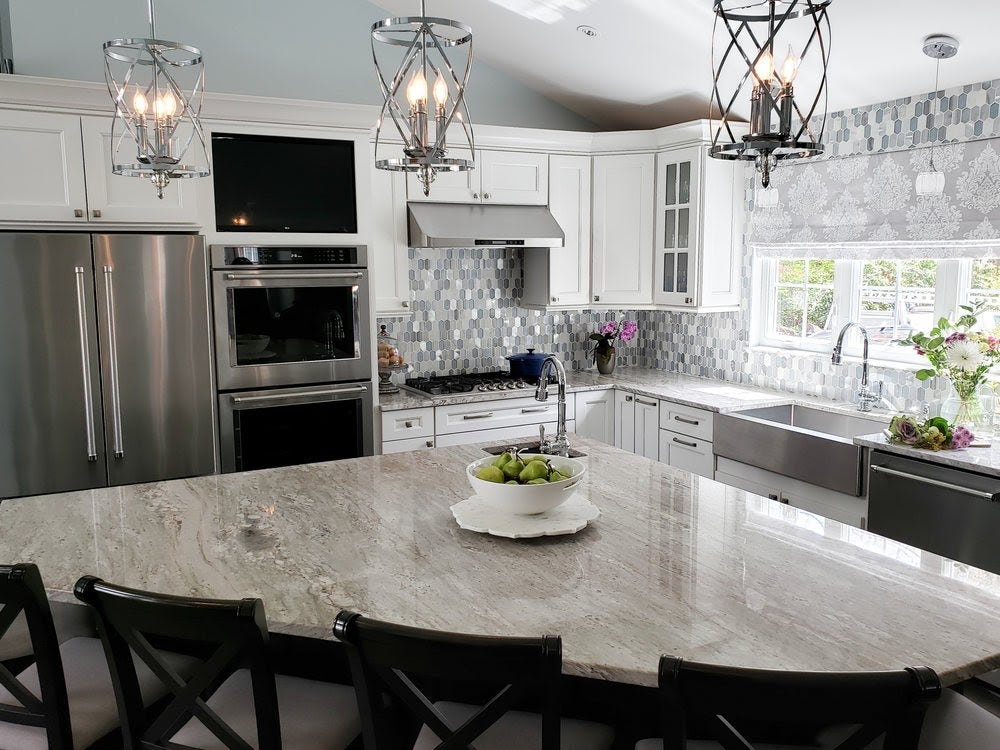The noise level of a range hood, measured in sones, depends on the CFM rating of the blower. The higher the CFM, the louder the range hood. So, the surefire way to make a range hood quieter is to buy a range hood with a lower CFM.
But, if you are looking for a range hood that clears grease, smoke, and cooking exhaust from your kitchen, it will make some noise. Some range hoods are quieter than others but none are completely quiet.
Now, you may not need or want to replace your entire range hood. After all, it takes time and effort to choose the best range hood for your kitchen. You have to research it, order it, unpack it, inspect it, and finally install it.
Luckily, there are five simple things you can do to make your range hood quieter, keeping you and your family comfortable while in the kitchen. Let’s check them out.
Run the range hood at lower speeds.

By far, the easiest way to make your range hood quiet is to run it at lower speeds. Every range hood at Proline Range Hoods features a variable speed blower or blowers. Most have four speeds, some have three, and some have up to six.
Our ProV range hoods and PLJW 104 wall hoods feature dial knobs. Instead of specific CFM settings for speeds one to four, turn the knob to increase and decrease the power.
We always recommend that our customers buy a larger, more powerful range hood. This way, you can run it on lower speeds and still enjoy great power.
Buy a hood compatible with an inline blower.
An inline blower sits inside your ductwork, not inside the range hood itself. It is much further away from your cooktop, which makes it much quieter than a local blower, which sits inside your range hood.
Buy a new inline blower here.
The ProV range hoods at Proline are compatible with an inline blower. These hoods can be mounted on your wall or inside a custom hood.
Keep the filters clean to prevent grease buildup inside the blower.
To keep your range hood in great condition for years to come, the most important thing to do is to clean the filters consistently. Toss the filters on the bottom rack of your dishwasher every four to six weeks depending on how often you cook.
If you own a ductless range hood, it runs with replaceable charcoal filters which you don’t need to clean.
If you maintain your filters consistently, you will prevent heavy grease and dirt buildup inside the range hood blower. The cleaner the blower, the more efficient the range hood will run.
Tighten any loose parts on your range hood.

Sometimes, the screws on the blower can become loose and make a rattling noise. Simply remove the filters to inspect the screws on the blower. If they are loose, tighten them.
Tighten the support screws as well in the back or sides of your hood. Not everyone chooses to install these screws, but they are useful for extra support.
Increase the size of your ductwork.
The final method on this list is a little more time-intensive, but it works. The larger the diameter of your ductwork, the easier it is for air to travel through it and outside your home. There won’t be as much resistance in the duct system, which will allow it to run quieter and more efficiently.
If you’re unsure about what size ductwork is best for your hood, check out this complete guide (helpful chart included).
Keep in mind that your range hood could be loud for reasons that don’t have to do with the fan itself. Maybe you are in a larger kitchen where the sound tends to echo throughout the room.
Perhaps you have a double range or double grill setup with two range hoods. In this case, the noise will be twice as loud as buying one hood – if you turn both on at the same time.
Also, generally, ducted hoods are louder than ductless hoods, because they are more powerful.
For more information on range hood noise level, or sones, check out this article, complete with a sones to decibels conversion chart.
That wraps up our guide on how to make your range hood quiet. Hopefully you found a solution to reducing the noise of your hood using one of these four easy tips.
To browse our quietest range hoods, click on the banner below.
If you liked this article, you might enjoy our others on range hoods and sones.
